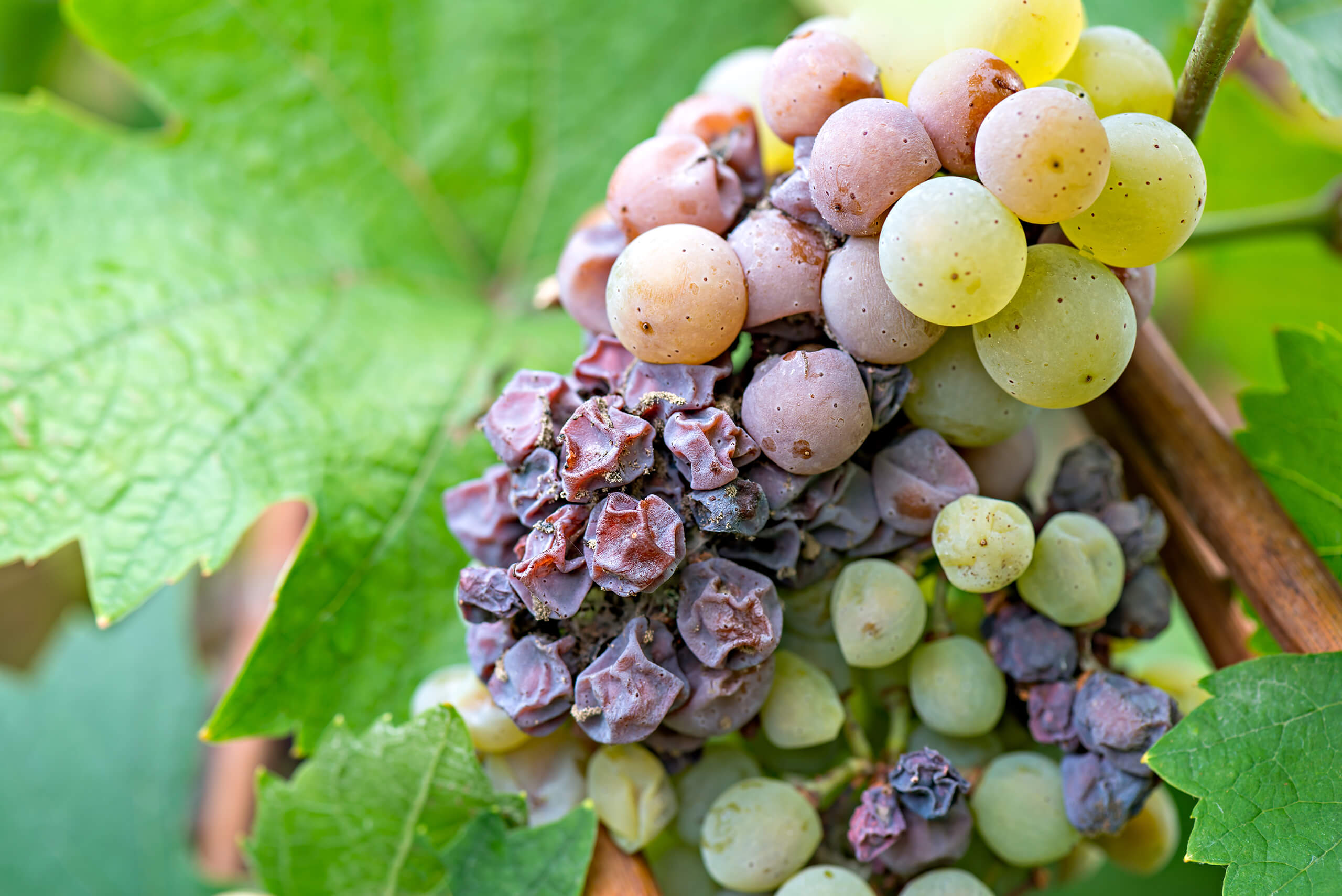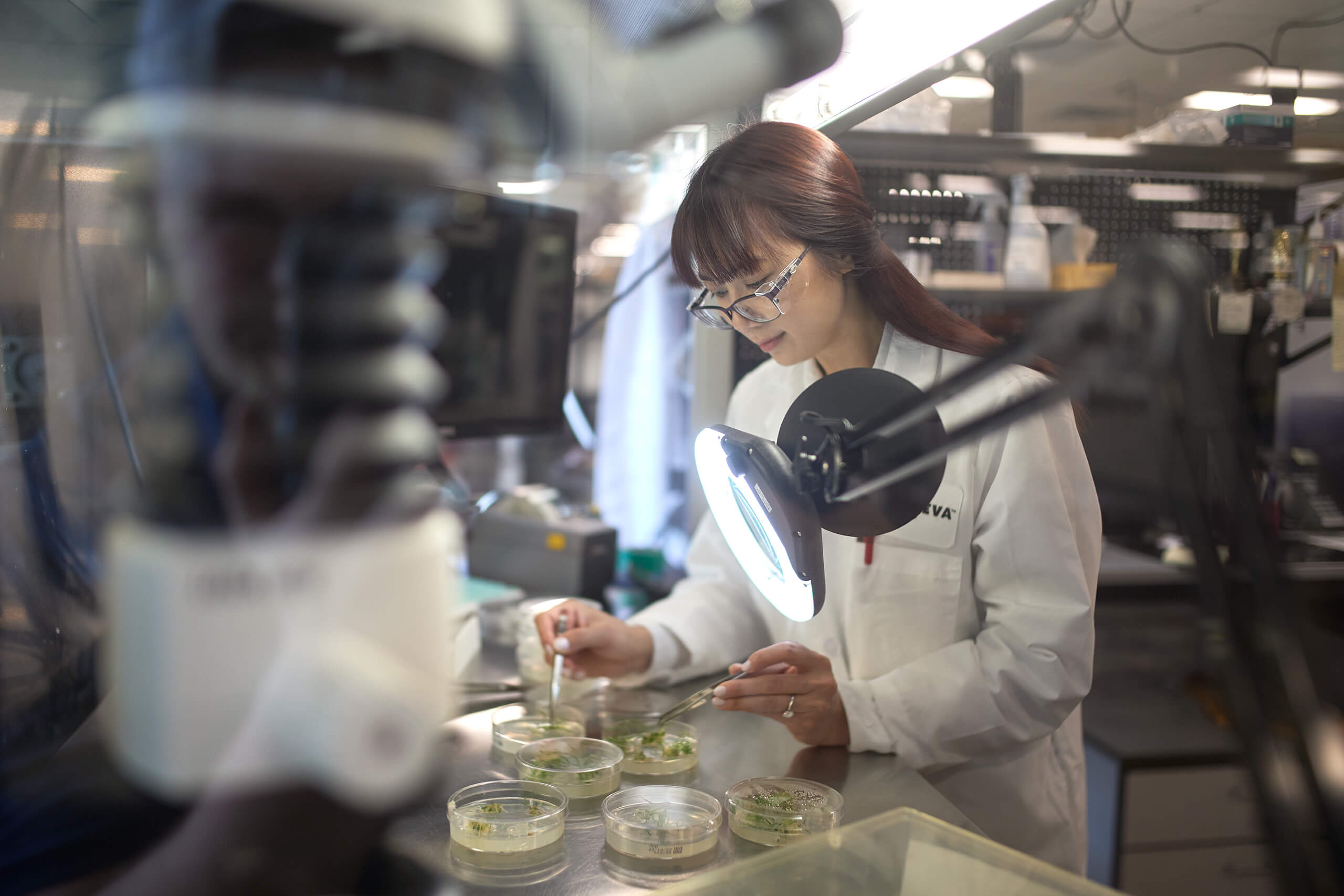
Fungal infections have dogged agriculture for millennia, but new fungicides – though the process for discovering them is arduous – provide new solutions for farmers and the consumers they feed.
When Hungarian farmers in Tokaj-Hegyalja notice the fine, gray down coating of noble rot on their grapes, they don’t see a ruined harvest. Instead, those shriveled, fuzzy grapes herald another vintage of Tokaj, the “wine of kings”.
In the Americas, Mexican corn farmers that come across nightmarish blue-gray carbuncles in place of normal ears rejoice that huitlacoche, or corn smut, has colonized their fields, providing them with a rare and expensive delicacy.

Bruna Forcelini leads the team responsible for the discovery and development of new fungicides at Corteva Agriscience.
Source: Corteva AgriscienceThose fancy fungal infections join thousands of others essential to everything from antibiotics to cheese rinds. Fungi even labor unseen beneath the soil to help improve
plant health.
Not all fungi are beneficial – or even benign – and plenty of commercial crops are vulnerable to their ravages. Wheat, says Bruna Forcelini, leader of discovery and development fungicide screening at Corteva Agriscience, is susceptible to several diseases that crater yield. Soybeans are too, and Forcelini goes on to identify a list of specialty crops susceptible to fungal diseases: strawberries, grapes, cucumbers, and tomatoes. Her job is to protect those plants from the ravages of fungal infection, preserving farmer livelihoods and increasing global food security.
Invaders from another kingdom
Fungi – a biological kingdom all their own – often feed off other living things and present a persistent problem in agriculture. When it comes to causing agricultural havoc, these organisms have an advantage over bacteria, for example, in that they don’t need an opening to infect a plant.
They can show insects a thing or two about range, as well. Fungal spores can travel enormous distances in a short time. Consider that Ug99, a particularly destructive form of fungal wheat stem rust, took just 22 years to spread from its origin point in Uganda to most of East Africa and the Middle East, despite global efforts to contain it.
Farmers in Europe are painfully familiar with wheat Septoria, while those in North America know wheat rust all too well. Powdery mildew is universal. “And then you have the early and late blights. Late blight is the one that caused the Irish potato famine. It’s still a problem in the current world,” says Forcelini.
Controlling fungal infections
Farmers have three main avenues for controlling harmful fungi: cultural, chemical, and biological. Farmers that rotate their crops from year-to-year exercise cultural control by preventing specific plant pathogens from gaining a foothold. “The other part of cultural control,” Forcelini notes, “is using seeds or varieties that are resistant to diseases.”
Among other uses, biologicals are excellent for controlling fungal infections right before harvest: “You want to harvest your crops and sell them the next day, but they still need an application of some kind of fungicide. For example, there is no pre-harvest interval for Bexfond®, a Corteva biofungicide available in the US, targeting pathogens that infect potatoes, cotton, cereal grains, and more,” Forcelini says. Along with biologicals, there are chemical fungicides, which can be applied to the plant or even the seed itself.
Innovation in all three avenues is crucial for control, especially as weather patterns change: “As temperatures rise, you’re going to give an advantage to those pathogens that thrive in higher temperatures. We’ll continue to see pathogens that weren’t a problem before, that in the future will be,” she warns.
Related article

Better Yields, Sustainably
A new generation of naturally derived innovations is protecting crops, controlling pests, and nurturing...

Of the 100,000 or so potential fungicide molecules tested each year, about 7-10% progress to being tested on plants.
Finding new molecules
Emerging problems are the signals Forcelini is looking for – “the market decides what we’re going to test” – but it’s Corteva Agriscience chemists who give her the raw materials. In a given year, they’ll send over as many as 30,000 new molecules to test, which Forcelini and her team will evaluate before choosing the most promising ones (about 7-10%) for tests on live plants. “A lot of those molecules don’t succeed, and when they don’t, we want them to fail fast.”
Laboratory and greenhouse studies continue for molecules that show signs of success, but even that’s not enough. Forcelini and her colleagues are after a molecule that provides both protective and curative activity against specific diseases. “If there’s already an infection in the field, you want to apply something that will stop infection, right? But you’ll also want to protect them from future infections,” says Forcelini.
The research process continues with additional tests – often done in parallel – to be sure the new fungicides meet the needs of farmers and the community, and that the molecules do so sustainably. The team will conduct dose and plant toxicity testing and will see if the candidate solution will work on multiple crops – cucumbers and cereals, for example. They’ll also determine if the potential product is likely to be stable in real-world conditions.
Researchers conduct simultaneous regulatory studies to make sure the new fungicide isn’t harmful to animals, humans, or the environment. All that takes place before a product ever makes it into field trials, which are their own gauntlet to traverse. It should come as no surprise, then, that 10 or more years can elapse between the first exploration of a new molecule and its commercialization.
For each fungicide that comes to market, we have to test 100,000 molecules.”
New protection for old troubles
Eventually, though, the work Forcelini’s team does makes it into farmers’ hands. Inatreq™ Active and Adavelt™ Active are new fungicides that emerged from exactly this process. Currently being commercialized, Inatreq and Adavelt work on a unique target site in pathogens that cause some of the most significant and damaging diseases in crops, like anthracnose, powdery mildews, Septoria, and Botrytis.
“Those started in our team 15 years ago,” Forcelini notes with pride. So did Zorvec™ Active – a sustainable solution for managing pathogens like potato late blight and other oomycetes (or water molds) that haven’t just destroyed harvests but also altered world history.
The innovation of new molecules goes on with Haviza™ Active, which is projected to hit the market in South America in 2027, providing farmers with a novel tool to control Asian soybean rust, among other late-season fungal infections.
These new fungicides and plant health solutions are the culmination of decades of careful discovery and development work, informed by market necessities and Corteva’s commitment to forecasting future needs. “For each fungicide that comes to market,” Forcelini says, “we have to test 100,000 molecules.”
That’s made possible because Corteva invests over $4 million every day into research and development – and necessary because these and other threats to world agriculture continue to evolve. Fortunately for farmers and the consumers who depend on them, she and her colleagues are as unfazed by that challenge as Hungary’s Tokaj-makers are of a whole vineyard full of noble rot.



